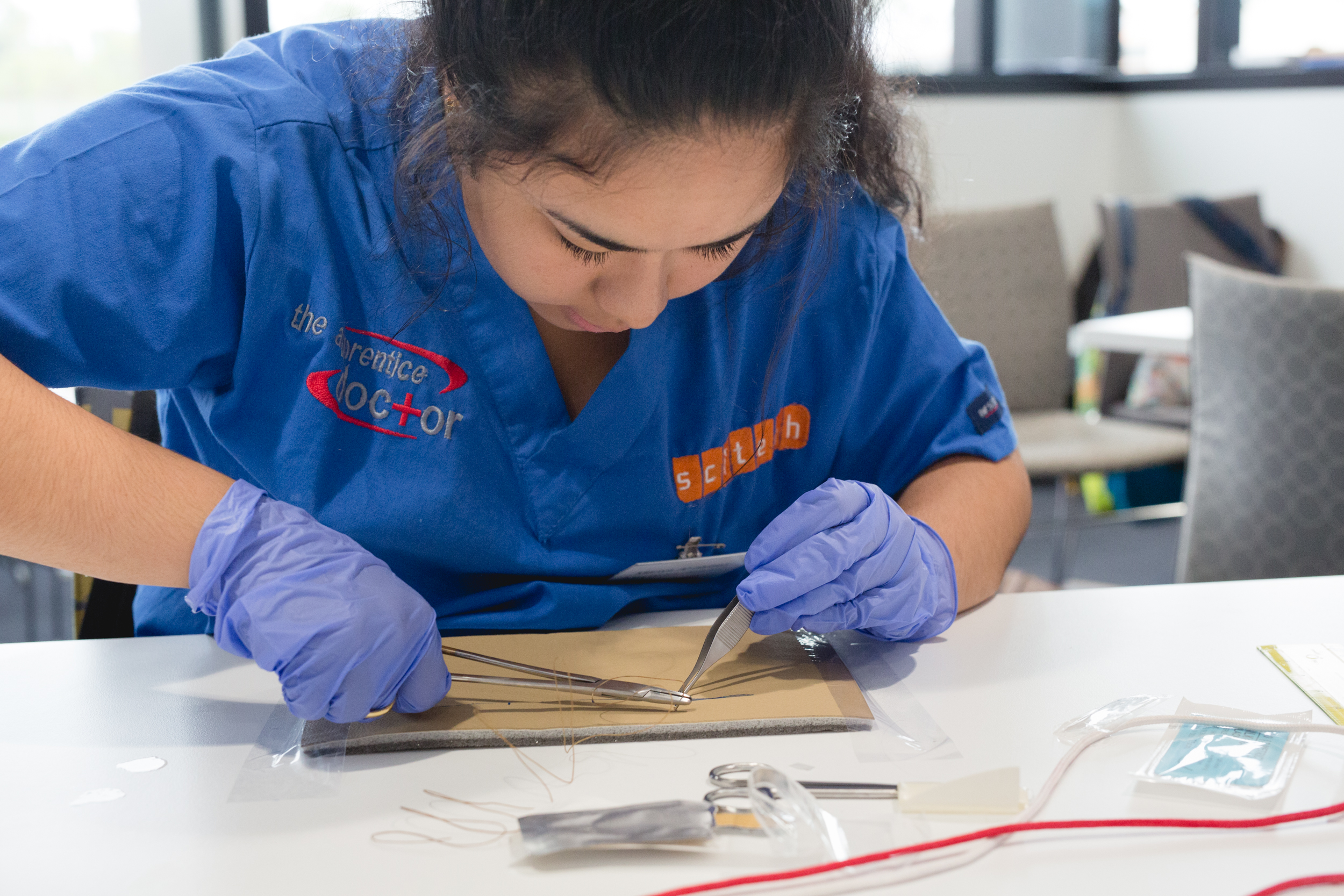One of the most important components of wound care and management, repairing of moderate to serious lacerations and/or wounds resulting from surgery or other procedures is the usage of efficient suturing tools, materials, and techniques.
The main objectives of suturing are the following:
- Provide effective hemostasis to wounds.
- Speed up the healing process.
- Improve the function of the tissue and appearance.
However, a very important point to remember when it comes to suturing wounds is the risk of infection. Therefore great care must be taken in performing the procedure.
A single interrupted suture is the most common technique known by all physicians, and is used for the main purpose of wound closure in a manner that is pleasing to the eye. It doesn’t take long to learn this simple suturing technique; therefore, every person can, and should learn how to treat minor wounds. However, techniques used to suture difficult and challenging wounds can take years to master, and thus should only be performed by a qualified surgeon.
Choosing the right suture technique
According to the condition of the wound and its type, a surgeon can easily choose the right technique of suturing from various techniques to choose and master. Some things to consider, and which will make choosing more easy, is that the edges of the wound should be well approximated, with no distortion and slightly parallel to skin tension lines.
Choosing the right suture technique
According to the condition of the wound and its type, a surgeon can choose from among a variety of suturing techniques. In choosing a surgeon looks to see if the edges of the wound are well approximated, if there is distortion, and if the wound is slightly parallel to skin tension lines.
According to the condition of the wound and its type, a surgeon can choose from among a variety of suturing techniques. In choosing a surgeon looks to see if the edges of the wound are well approximated, if there is distortion, and if the wound is slightly parallel to skin tension lines.
Surgeons will consider one of the following basic suture techniques:
Single Interrupted Suture
This is one of the most basic wound management techniques, generally chosen to close accidental wounds. A synthetic, monofilament and non-absorbable suture are usually chosen to place a series of individual stitches on the skin.
Horizontal Mattress Suture
This is a type of interrupted stitch, and holds the edges of wounds securely while taking the wound edges inside out. This suture is generally applicable for distribution of tension around the wound, especially if the wound is large.
Vertical Mattress Suture
This type of suture supports the wound, provides excellent wound edge eversion and decreases dead space. These sutures can also be attempted in a different fashion with simple interrupted sutures to achieve eversion. The only drawback to this suture is that it may compromise blood flow to the injured tissue.
Sub-cuticular Suture
When the surgeon has to close off dead space, this suture is generally used which may allow blood or fluid to collect around the empty space and promote infection to it. This is performed by a suturing material that is synthetic and has absorbable properties.
Running Suture
In the running suturing technique, a single length of material is used to secure and tie the wound at each end. A non-absorbable and synthetic mono filament is normally used for this process. This method is the fastest to perform although doesn’t work well for irregular shaped wounds.
The techniques used for wound suturing are many and each one should be used according to the nature of the wound.
You can read more on suturing techniques here.
Suturing Course and Kit course from The Apprentice Doctor!
There is no need to wait on getting practice with suturing. Before you step into any situation requiring suturing, even an emergency in your own home, you can perfect your suturing skills. The Apprentice Doctor® Suture Kit & Suturing Training Course teaches you how to confidently close wounds. Begin training today!
We would love to answer any questions you have so leave a comment or question below.


That’s good to know that stitches would help your wound to heal faster. I could see how that would be nice to not have to worry about it as much. I’ll have to make sure to go to the urgent care and get some stitches if I ever get a deep cut.